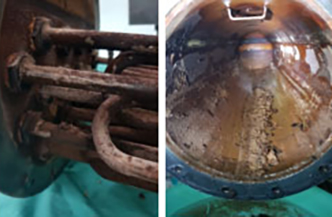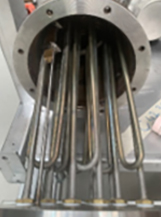Water quality can affect the life of all your other equipment including your sterilizer, washer-disinfector, and the item they process.
If the water quality to the steam generator doesn’t meet AS5369 & EN285, mineral deposits can accumulate and coat the generator heating elements. The result of this is that the functionality of your generator will continuously decrease until it stops working all together.
There is also the risk that any undetected high chloride content will cause stress corrosion in the stainless-steel chamber or jacket of the sterilizer.
All of this can be avoided with our water quality testing process.
We carry out testing from the boiler feedwater in accordance with AS5369 & EN285 and water quality test of the cleaning and final rinse as per AS5369.
Steam is a critical variable in the success and repeatability of the sterilization process.
So, the quality of the steam in your sterilizer is a hugely important factor when it comes to steam sterilization and new standards require all sterilizers to have their steam supply tested and certified upon every new installation.
Steam quality is not a measure of the impurity content of the steam.
It’s defined as the measurable physical aspects of steam used for sterilization. These physical aspects include temperature (superheat), dryness (liquid water content), and non-condensable gas content.
Deviations from established ranges of these aspects of the steam can result in wet loads, damaged loads, unsterile loads, sterilization indicator failures (biological and chemical) as well as the staining and corrosion of instruments and containers.
To comply with AS5369, steam quality tests need to be conducted as part of IQ or OQ and in accordance with the requirements of EN285. Testing of the steam supply to determine the steam dryness value is generally performed during IQ. If the requirements for IQ are met, then this test doesn’t need to be performed regularly, but if you’re trying to find the cause of a non-conforming process, it can be a useful investigative tool.
Upon completion of steam quality testing, you’ll receive a report listing any recommendations deemed necessary to ensure your steam supply is in accordance with normative references.
Steam purity can have a major influence on the (SAL) sterilization process.
All steam purity testing should be conducted in accordance with AS5369; reference to EN285 to measure contaminants in condensate from steam used by the sterilizer to be considered in relation to contamination of the load.
To comply with AS5369 steam purity tests need to be conducted as part of IQ or OQ and in accordance with the requirements of EN285.
Upon completion of steam quality testing, you’ll receive a report listing any recommendations deemed necessary to ensure your steam supply is in accordance with normative references.
 |  |
Steam generator supplied with untreated water after 12 months use. | Uncontaminated steam generator. |